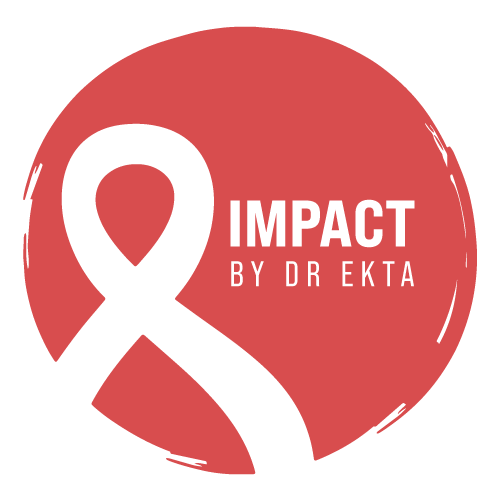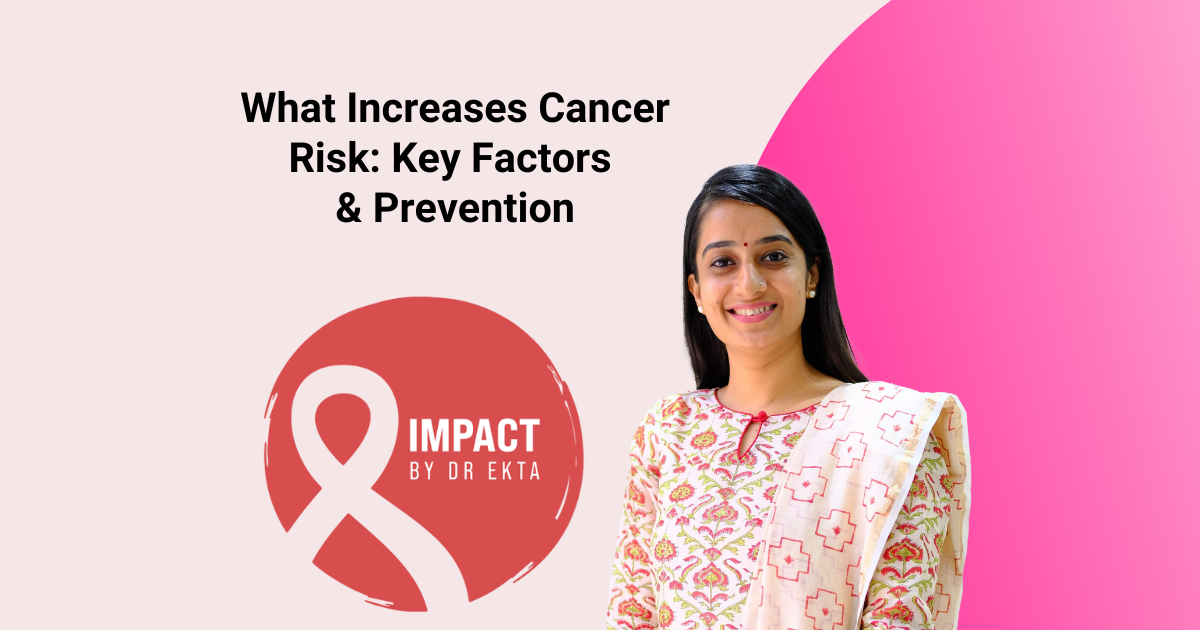Understanding what increases cancer risk is essential for making informed decisions about prevention. While some factors, such as genetics, cannot be changed, many lifestyle choices significantly influence the likelihood of developing cancer. This blog explores what increases cancer risk and offers practical strategies to minimize it.
Genetic vs. Environmental Risk Factors
When discussing what increases cancer risk, it’s important to understand that risk factors fall into two main categories:
- Genetic Factors: These are inherited from our parents and cannot be changed. A family history of cancer can increase your risk, but it does not mean you will definitely develop the disease.
- Environmental and Lifestyle Factors: These are the choices and exposures we have control over, such as diet, smoking, and sun exposure.
While we cannot change our genes, focusing on controllable factors can significantly lower our overall risk.
Lifestyle Factors That Increase Cancer Risk
1. Tobacco Use
Smoking is one of the leading causes of cancer worldwide. It is responsible for lung cancer and has been linked to cancers of the mouth, throat, pancreas, bladder, and more. Even secondhand smoke can increase cancer risk. If you smoke, quitting is one of the best things you can do for your health.
2. Unhealthy Diet
A poor diet high in processed foods, red meats, and sugar can contribute to cancer. Eating a diet rich in fruits, vegetables, whole grains, and lean proteins can reduce the risk of many types of cancer. Some foods, like cruciferous vegetables (broccoli, cauliflower) and berries, contain antioxidants that help protect cells from damage.
3. Lack of Physical Activity
A sedentary lifestyle has been linked to an increased risk of various cancers, including breast and colon cancer. Regular exercise helps maintain a healthy weight, improves immune function, and reduces inflammation, all of which lower cancer risk.
4. Obesity
Being overweight or obese increases the risk of several cancers, including breast, colorectal, and liver cancer. Excess body fat can cause hormonal imbalances and chronic inflammation, both of which play a role in cancer development. Maintaining a healthy weight through a balanced diet and regular exercise is essential for cancer prevention.
5. Excessive Alcohol Consumption
Drinking alcohol in excess can increase the risk of liver, breast, and esophageal cancers. The liver metabolizes alcohol into harmful substances that can damage DNA, leading to mutations and cancer growth. Limiting alcohol intake can help lower this risk.
6. Sun Exposure and UV Radiation
Skin cancer, including melanoma, is primarily caused by excessive exposure to ultraviolet (UV) radiation from the sun and tanning beds. To protect your skin, use sunscreen, wear protective clothing, and avoid prolonged sun exposure during peak hours.
7. Chronic Infections
Certain infections increase cancer risk. For example:
- Human papillomavirus (HPV) is linked to cervical and throat cancers.
- Hepatitis B and C increase the risk of liver cancer.
- Helicobacter pylori infection is associated with stomach cancer.
Vaccination, safe practices, and early treatment of infections can help reduce the risk.
8. Exposure to Carcinogens
Carcinogens are substances that can cause cancer. Common carcinogens include:
- Asbestos (linked to lung cancer and mesothelioma)
- Benzene (found in tobacco smoke and industrial chemicals)
- Radiation (including X-rays and radioactive exposure)
Limiting exposure to harmful chemicals and using protective measures in workplaces can help reduce risk.
Other Factors That Increase Cancer Risk
1. Aging
Age is a significant risk factor for cancer. As we grow older, our cells accumulate damage over time, increasing the likelihood of mutations that can lead to cancer. While we cannot stop aging, maintaining a healthy lifestyle can slow down the impact of aging on our cells.
2. Weakened Immune System
People with weakened immune systems, such as those with HIV/AIDS or those taking immunosuppressant medications, have a higher risk of certain cancers. Strengthening the immune system through a healthy diet, vaccinations, and regular check-ups can help reduce risk.
3. Hormonal Factors
Hormonal imbalances, such as prolonged exposure to estrogen, can increase the risk of breast and ovarian cancers. Birth control pills and hormone replacement therapy (HRT) can also affect hormone levels. Discussing the benefits and risks with a healthcare provider can help manage hormone-related cancer risks.
Prevention Tips: How to Lower Your Cancer Risk
Now that we understand what increases cancer risk, let’s focus on ways to reduce it:
- Quit smoking – Seek support programs or nicotine replacement therapies.
- Eat a balanced diet – Include plenty of fruits, vegetables, and whole grains.
- Exercise regularly – Aim for at least 150 minutes of moderate activity per week.
- Maintain a healthy weight – Keep your BMI within a healthy range.
- Limit alcohol consumption – Stick to moderate drinking guidelines.
- Protect your skin – Use sunscreen and avoid tanning beds.
- Get vaccinated – Protect yourself against HPV and hepatitis.
- Reduce exposure to carcinogens – Follow workplace safety guidelines.
- Have regular screenings – Early detection through mammograms, colonoscopies, and Pap smears can save lives.
Conclusion
What increases cancer risk is a crucial concern for prevention. While genetics and aging are unavoidable, making informed lifestyle choices can significantly reduce the likelihood of developing cancer. Quitting smoking, adopting a nutritious diet, staying active, and undergoing regular screenings are powerful steps toward a healthier future. If you have concerns about what increases cancer risk, consult a healthcare professional for personalized guidance.

